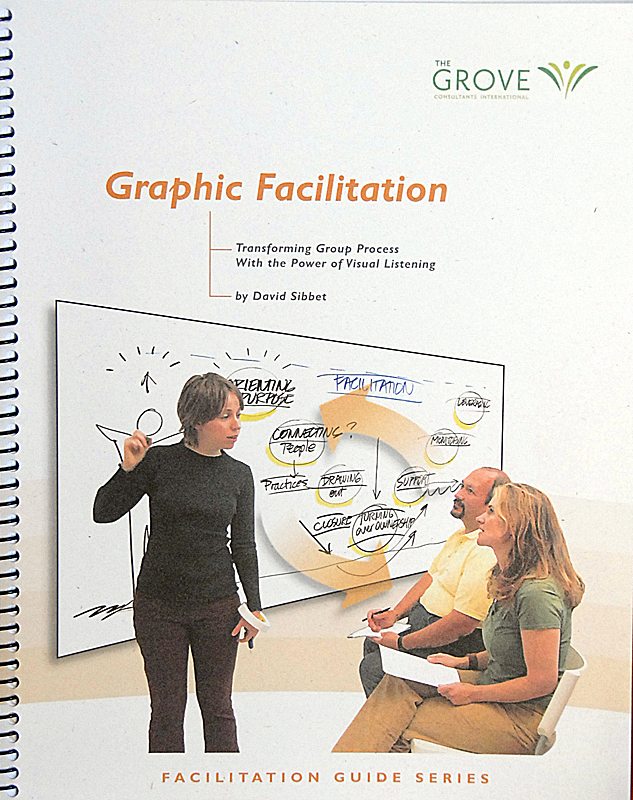Graphic Facilitation: Transforming Groups With the Power of Visual Listening
 This fall I get the treat of using my new book, Graphic Facilitation, to lead a Principles of Graphic Facilitation training in Baltimore. This has been a year of real completion for me with this work.
This fall I get the treat of using my new book, Graphic Facilitation, to lead a Principles of Graphic Facilitation training in Baltimore. This has been a year of real completion for me with this work.
Twenty-six years ago in 1980 I wrote the first version called I See What You Mean: A Workbook Guide to Group Graphics®. That manual has shaped my and others’ facilitation careers more than I could have anticipated. It’s gone through at least nine reprintings. It was copied by the U.S. Army to train all their facilitators at Fort Ord in the 1980s. The developmental disabilities network trained by John O’Brien in England used it to build a platform for Person-Centered Planning. And it became a foundation product and course for The Grove as we’ve trained people worldwide. Now there is even an International Visual Practitioners Forum holding annual conferences.
Since that time my work has evolved quite beyond Group Graphics®, the brand name I and my colleagues gave the specific approach to graphic facilitation described in this book.

 While looking through some past work I came across this Partners for Change model that I co-developed with Sissel Waage, then VP of R&D at The Natural Step. We’d worked together at a fascinating symposium at the Weatherhead School at Case Western University in late 2003 bringing together social scientists and activists who had deep experience in social change. This process drew on our long experience facilitating cross-sector meetings.
While looking through some past work I came across this Partners for Change model that I co-developed with Sissel Waage, then VP of R&D at The Natural Step. We’d worked together at a fascinating symposium at the Weatherhead School at Case Western University in late 2003 bringing together social scientists and activists who had deep experience in social change. This process drew on our long experience facilitating cross-sector meetings.
